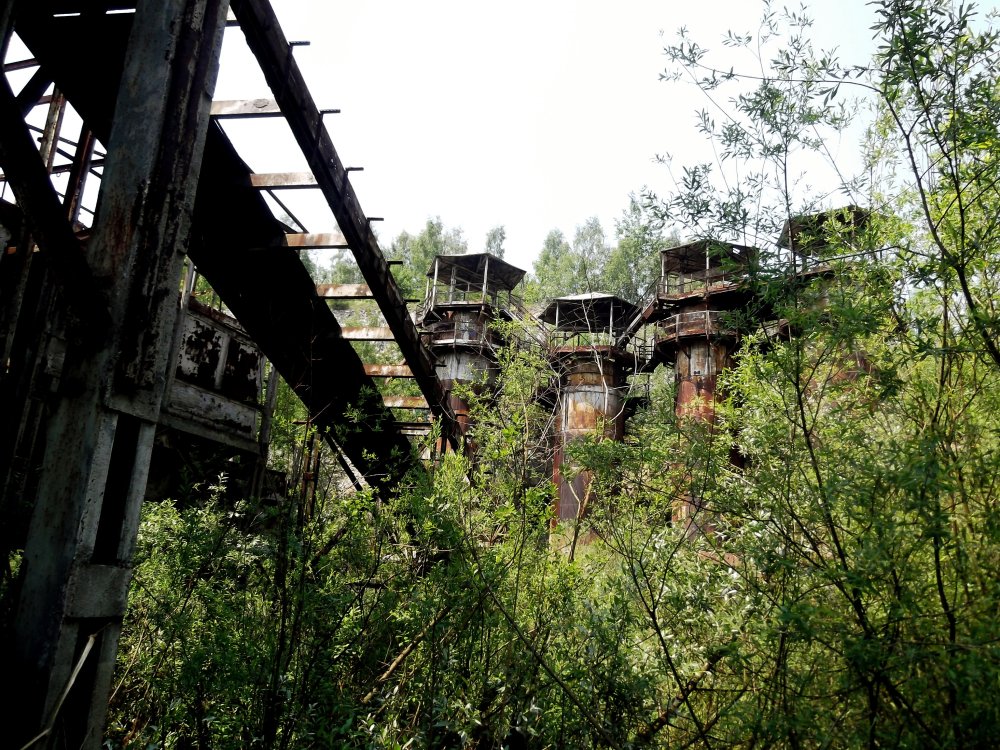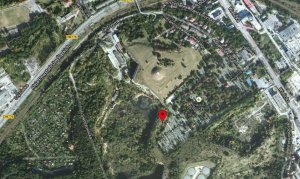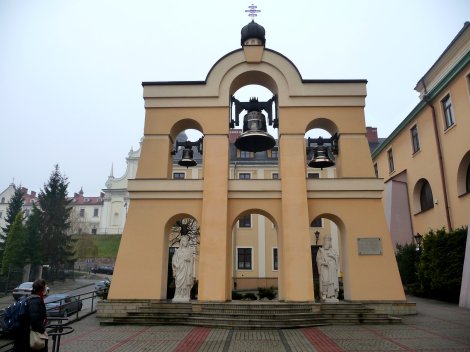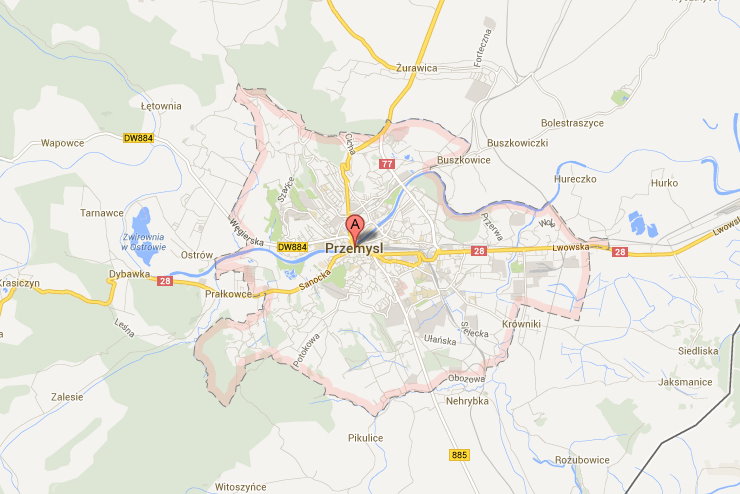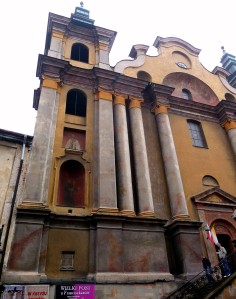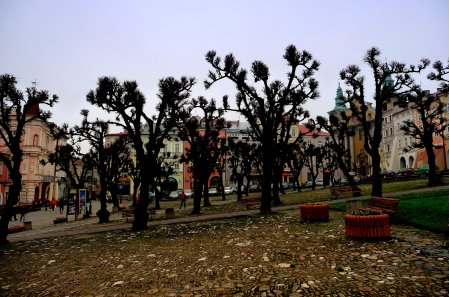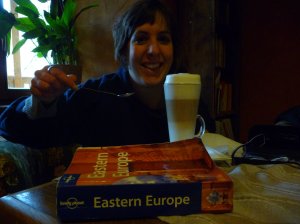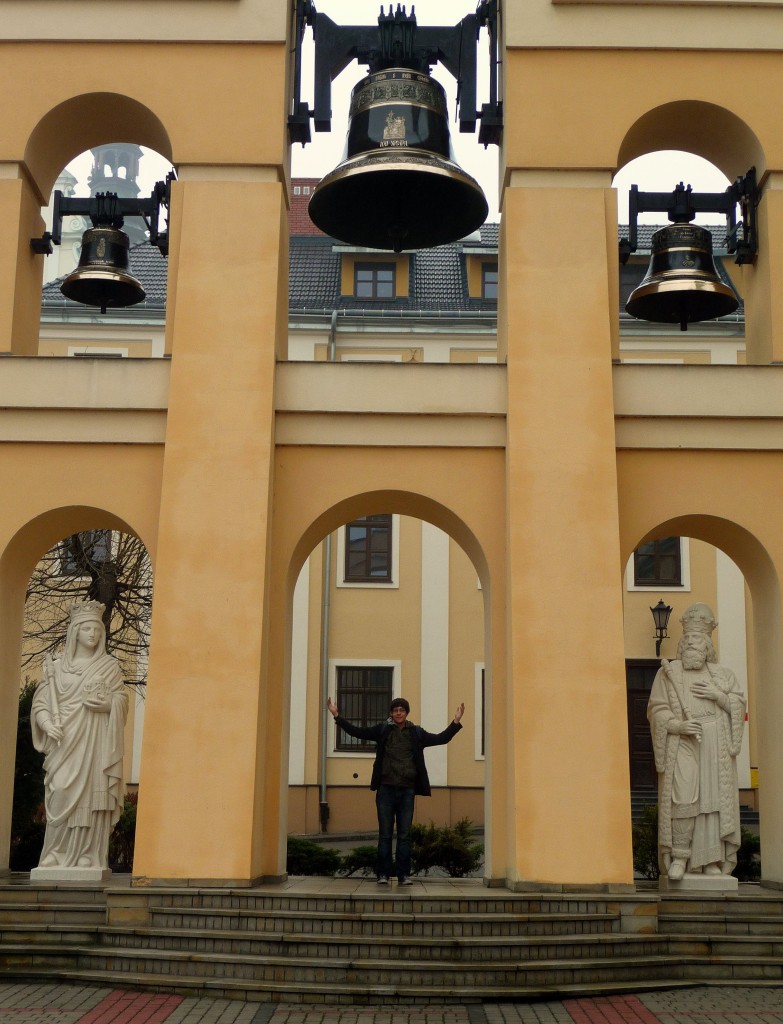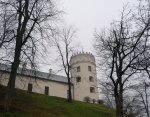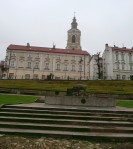Due to the city’s proximity to the border (It’s about 12km or 7 miles), we decided to catch a bus to the crossing. We were informed that the bus station was found next to the train station by an underpass.
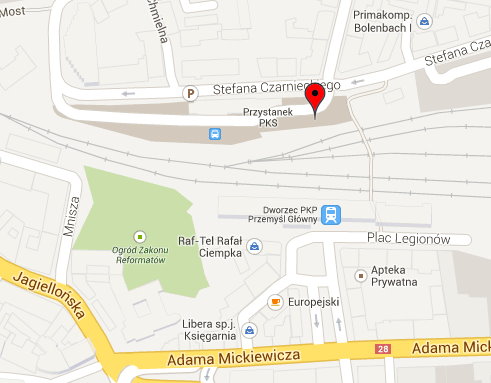
The Border Buses are located here
The bus station was going through some resurfacing work so mud and gravel made up the road and by the signs near a small kiosk, the mini-buses nearby were our route. Groups of old men, smoking copiously made up our entourage. We greeted one; his moustache matched his leather coat. “Granitsa?” (Polish for “border”) He nodded, without taking his cigarette out his mouth and gestured at the group of mini-buses, without specifying. After some time, he stamped his cigarette out in the mud and got on one, gesturing at us, and the groups of people clutching plastic bags of stuff. The bus should cost around 2.50/3 PLN.
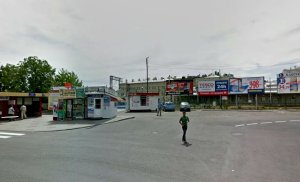
Holes were cut out of the backs of headrests and even the seat itself. Small plastic bags were stuffed into them; like the ones you see in Airports- punters had obviously tried to smuggle stuff over. Following the Wikitravel advice on the subject, we sat in the back and held our bags- We didn’t want to get caught up in anything. The bus drive was swift and we ended near a supermarket and a carpark; filled with vans. People had set up tables selling their wares; babcie stood with their covered heads, declaring loudly that their vodka was cheap. We strode past, going down a long path lined by a green fence. This was the crossing itself.
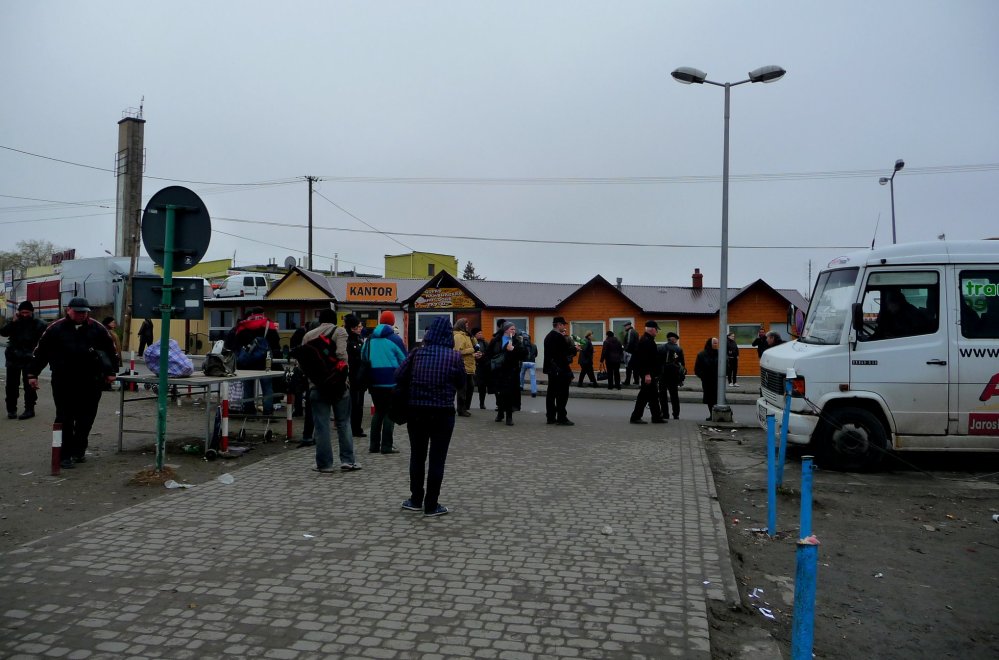
The path never seemed to end, but all of a sudden, it bottlenecked and it was full of people with bags and bags. Black plastic bags roped tight, tied to another black plastic bag. A small shopping trolley of bags. A man holding a massive telly straight from the shop. With some quick observation, we quickly realised what was going on. With it being Easter in Poland soon (Ukraine uses the Orthodox or Julian Calender) and not in Ukraine, these were Ukrainians getting their shopping before the Polish shops shut for the weekend. And what shopping! Bags of instant cappuccino and face cream were obvious but the black plastic bags that smelled of fresh meat and cheese stood out. These were items they were taking back to Ukraine to sell. Everyone was standing still chatting. From the snatched bits of conversation (that we understood) the border was shut for a bit.
Then, it wasn’t.
Everything kicked into overdrive as EVERYONE at once shoved their way to the front. Now, it was everyone for themselves. Everyone has to pass through a turnstile and the bulky bags and suitcases being carried were too big to fit, but obviously, it was worth trying. Shopping trolleys rammed into your legs, small old women trying to get through under your arms and elbows went flying. We shoved and shoved. People bellowed Ukrainian curse words into your face. The Polish border guards watched in horror (or amusement?) as 50-something people all shoved to get through a single turnstile. Time dragged as shoving, pushing, went on en masse. I stood on the precipice of stepping into the turnstile when a woman lifted her 4 bags over me and into my face as an attempt to get through; just as a old lady was lifting her bag of pork and beef under my armpit. I jumped forward, grabbing 2 of the woman’s bags and taking it through the turnstile (There was no way she would fit with all 4) and leaving them on the floor. She screamed at me as a thief and I waited patiently for Amelia. As the lady came through, I handed her bags back. She showed little emotion. These people are refered to as “ants” by locals. It became obvious why.
We stood in the dead-zone and collected ourselves. I saw a large “Welcome to Ukraine sign” (in Ukrainian) and thought, “That will make a nice picture”. I took the photo and thought nothing of it. Until I looked forward and out of a guard box, two men: one was short and dressed like an archtypal Bond villian and other (with the gun) strode towards us. We wasn’t happy. “No photos here!” he said (in Ukrainian or Russian). He demanded our passports. My only thought was “I have royally screwed things up”. He then demanded my camera. I offered to destroy the photos (in broken Polish). We went through my photos on my SD card, and he would say “destroy” or “next” (luckily, destroy is similar in Ukrainian to English). (This explains why I have no photos of the border crossing) He asked me questions, such as “Where is that?” to a photo of Krakow or “Who is that?” to a picture of Ellie. He then asked if Amelia was Ellie, to which we denied. After what seemed like forever, he handed the camera back and sent us on our way- tail, very much between my legs. Tip- don’t use your camera.
The next crossing point was a small hut. Here, the queue was non-existent. We handed our passports over. It was supposed to be a simple check, visa (stamp in passport) and done. The border guard could not understand the passport. She asked for my name- I said it. She asked for nationality, I said it (in Polish). No luck. She tried scanning it as an Irish passport (because she understood the Northern Ireland part), which got a big no-no from the computer. She brought a guard over, who didn’t know better. She walked off with my passport into another room. At this point, a queue was forming, including the lady from before, which started cursing us for holding up the line. She came into the hut with a dictionary into Ukranian and tried to translate my details in Cyrillic for the database. The guard from the camera debacle laughed through the glass and the Bond villian General stood in the way of the border, blocking any escape route. Eventually, she stamped my passport and we were allowed through. The general stepped aside, and we were allowed into Ukraine.

Passport stamp from Shehyni. Border crossing into Poland at Medyka. (Photo credit: Wikipedia)
Tips
- Don’t take photos in the dead-zone.Without basic Polish, he was very willing to take my camera away and he probably took pity on us, so don’t take that risk.
- If the shoving to get through the turnstile, say “tourist!” or “Nie rozumiem!” (“I don’t understand in Polish). They usually toned down the vivacity of their shoving.
- To speed up the Ukrainian crossing, you could translate your name into Cyrillic. We did this for our first names (not taking in account that “United Kingdom of Great Britain and Northern Ireland” doesn’t translate very well)
Now, all we needed was a bus to L’viv. That was easier said than done.
Next Post…
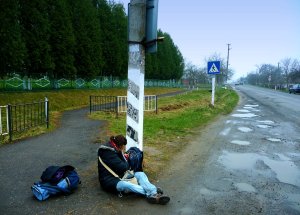
This is Part 3 of a journey to Ukraine.
Part I – Planning
Part II – Przemyśl
If you’re enjoying these posts please consider subscribing either through WordPress or by email using the Follow tab in the bottom right of this page. You’ll only get notified of new entries, no spam!
49.805100
22.922220

